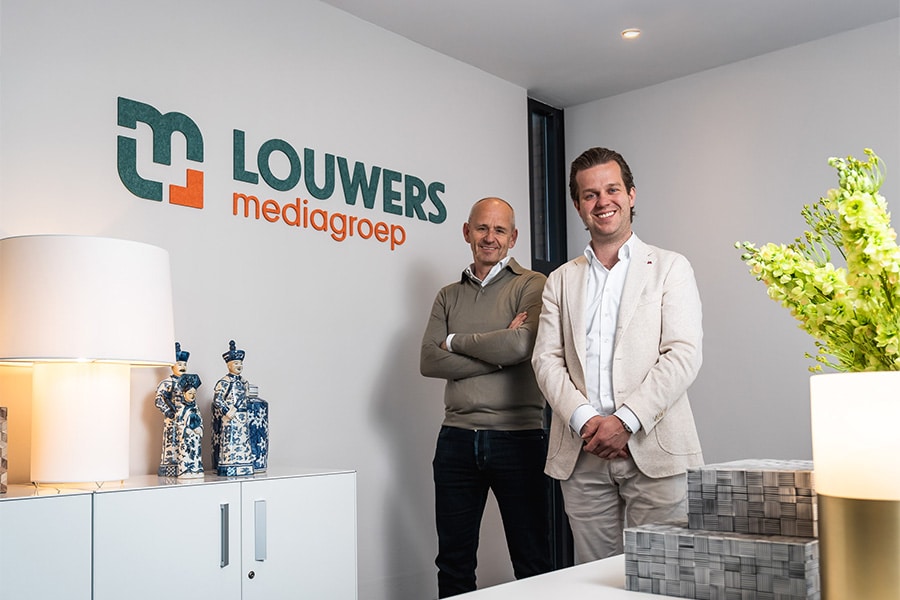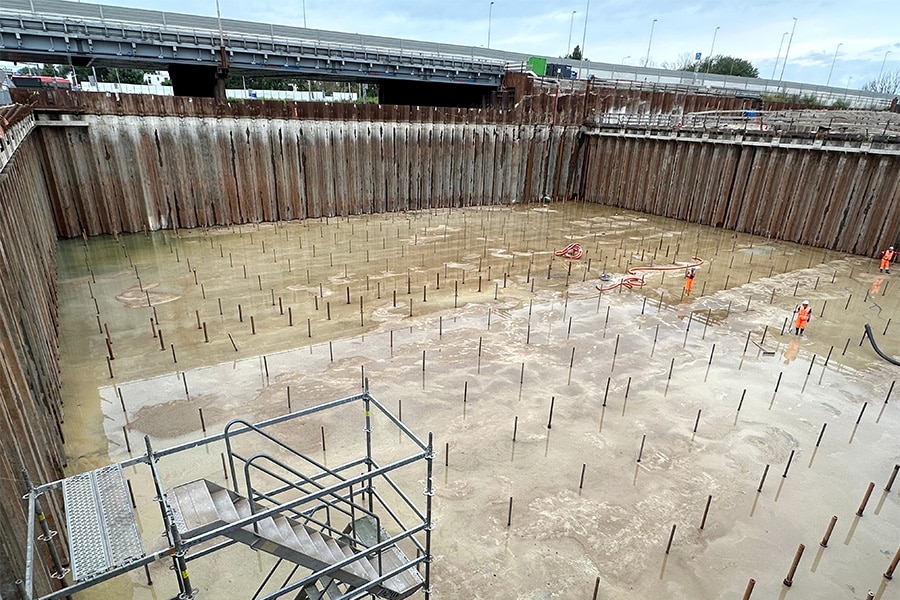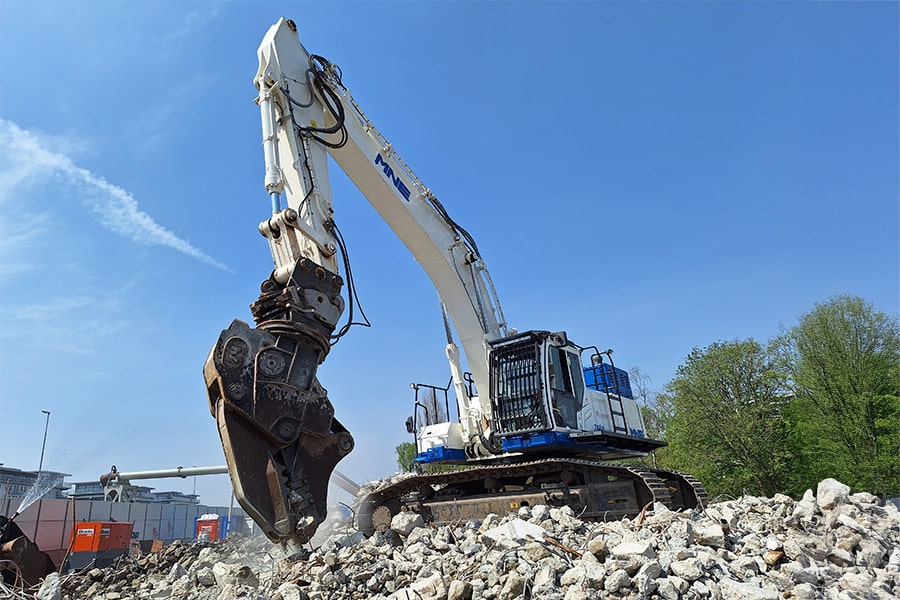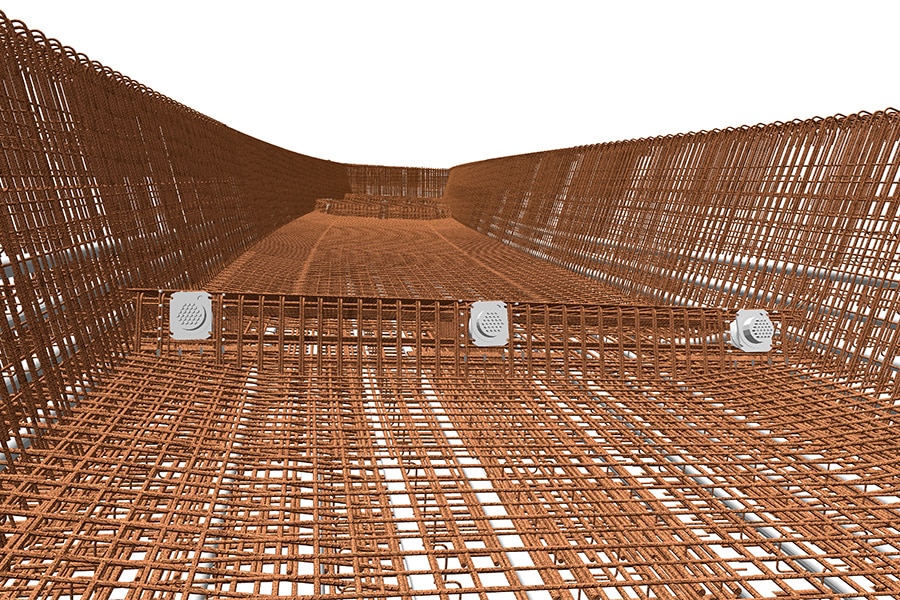
Concrete Steel Braiding 2.0 with Augmented Reality
Diepstraten Wapeningstaal is lord and master in 3D modeling and processing of rebar on the construction site. For the A16 Rotterdam, the company has already processed more than 12,000 tons of reinforcing steel in the various structures. The most recent assignment was the reinforcement of the complex deck of the structure that forms part of the new slip road from the Hoofdweg towards Delft/Den Haag (KW52B), for which Augmented Reality was even used.
With the exception of the Rottemer Tunnel, Diepstraten Wapeningstaal has contributed to all the structures in the A16 Rotterdam motorway. "We specialize in 3D modeling of reinforcement as well as processing it on site with our own reinforcing steel braiders," says Ed Schipper, director of Diepstraten Wapeningstaal. "Based on our 3D models, the rebar is cut and bent by our sister company, the BetonijzerBuigCentrale. Our braiders then get to work with it on the project. We don't outsource anything in this regard and do everything in-house and on our own."
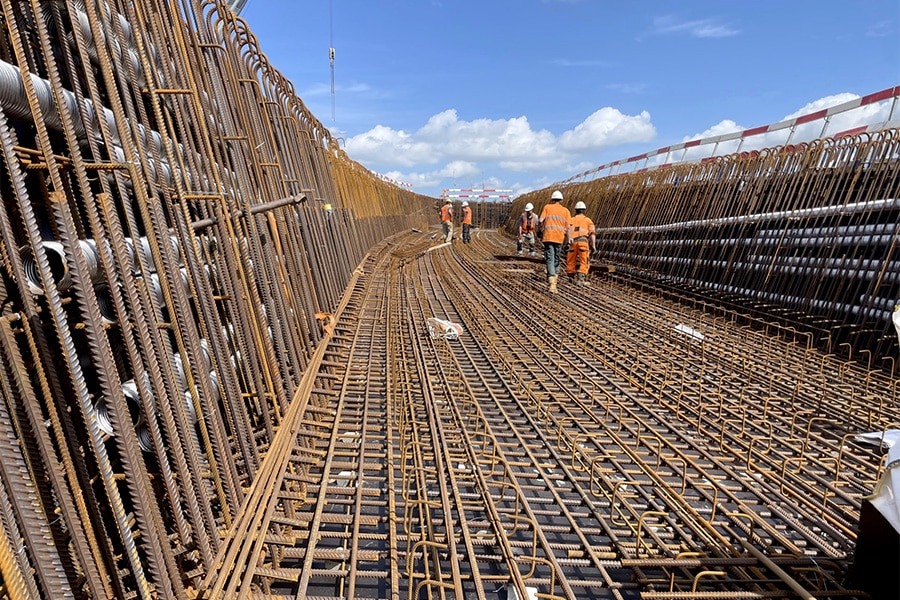
Complex reinforcement
The A16 Rotterdam is a special project for Diepstraten reinforcing steel. Not only because of its size, but also because of the complexity of some of the structures, such as the viaduct over the Terbregseplein (KW52A) and the curved concrete trough girder for KW52B. The latter was driven in over the long Ascension weekend and pre-built at a location next to the existing A16. "We designed, produced, delivered and braided over 200 tons of reinforcement for this," Ed lists. "The deck was fully worked out in 3D by our modelers. Given the complexity and especially the intensity of the many rebar in the deck, we used Augmented Reality. In this way, our braiders were able to walk through the model to get prior knowledge of 'what am I going to build', 'what does it look like', 'how much space is left', 'where are any conflicts', etc. Augmented Reality works extremely enlightening in this regard. So we are using it more and more and are quite unique in that. You don't see it much in construction and certainly not in our world of rebar weaving."
After pouring the deck of KW52B, it remained at the pre-construction site for several months. Then the more than 1,500-ton concrete trough girder was picked up over the long Ascension weekend and moved to its final position some 500 meters away using Self-Propelled Modular Trailers (SPMTs).

